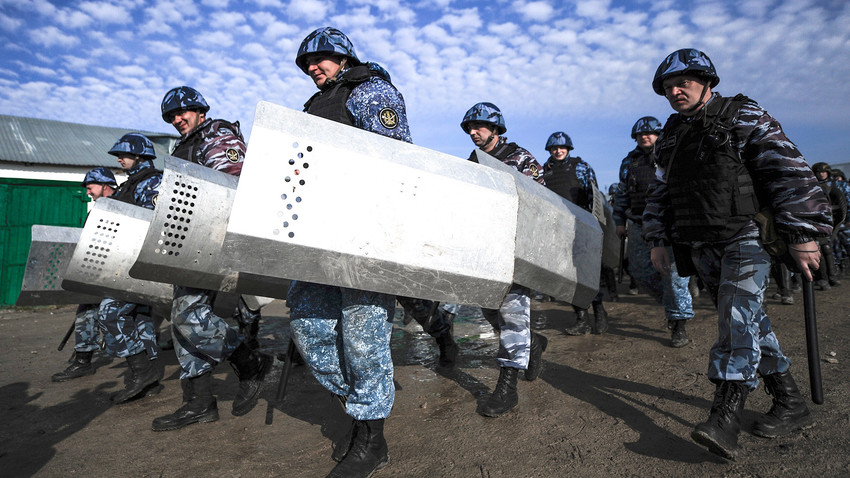Russia’s police force to be equipped with futuristic ‘sound shield’ for safer crowd control

First batch of new shields was already delivered to police forces.
Eugene Kurskov/TASSRussia’s police force will soon be equipped with an advanced new weapon to control large crowds. It’s called “Shepot” (“Whisper”) and the first five were recently delivered to the Federal Penitentiary Service for testing.
Each shield costs about $25,000 and creates “infra-low frequency fluctuations,” which in layman's terms are acoustic field emissions that can calm aggressive hoards without harming anyone. These shields aren’t light though: They weigh 13.5 kg so only musclebound officers will be able to carry them. They work on batteries, last for 50 minutes on one charge, and also protect the user like a normal riot shield.
About 120 decibels of pressure will be applied to people standing 10 meters away from the “Shapot.” Imagine standing next to an incredibly powerful speaker at a music gig!
New ‘RoboCop’ style vehicles for police

New RoboCop on wheels goes through tests and will be delivered to the police in coming years;
Kalashnikov MediaLast August, Russian arms manufacturers unveiled “RoboCop on wheels” - officially known as “Shield.” It looks pretty scary, it must be said, and will be used to disperse crowds and protesters.
It’s reinforced with three-meter high steel shields,
Panels on each side of the beast also open up like giant wings, with chains attached to the bottom to protect the policemen’s legs from stones, bottles, and anything else thrown at them.
If using any of Russia Beyond's content, partly or in full, always provide an active hyperlink to the original material.
Subscribe
to our newsletter!
Get the week's best stories straight to your inbox